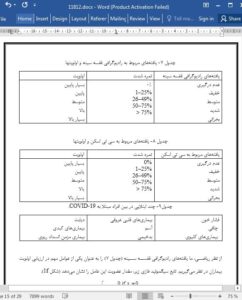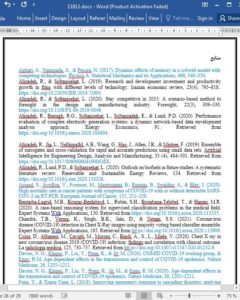Abstract
In this research article, we introduced an algorithm to evaluate COVID-19 patients admission in hospitals at source shortage period. Many researchers have expressed their conclusions from different perspectives on various factors such as spatial changes, climate risks, preparedness, blood type, age and comorbidities that may be contributing to COVID-19 mortality rate. However, as the number of people coming to the hospital for COVID-19 treatment increases, the mortality rate is likely to increase due to the lack of medical facilities. In order to provide medical assistance in this situation, we need to consider not only the extent of the disease impact, but also other important factors. No method has yet been proposed to calculate the priority of patients taking into account all the factors. We have provided a solution to this in this research article. Based on eight key factors, we provide a way to determine priorities. In order to achieve the effectiveness and practicability of the proposed method, we studied individuals with different results on all factors. The sigmoid function helps to easily construct factors at different levels. In addition, the cobweb solution model allows us to see the potential of our proposed algorithm very clearly. Using the method we introduced, it is easier to sort high-risk individuals to low-risk individuals. This will make it easier to deal with problems that arise when the number of patients in hospitals continues to increase. It can reduce the mortality of COVID-19 patients. Medical professionals can be very helpful in making the best decisions.
1. Introduction
A novel COrona VIrus Disease-2019 (COVID-19) is the reason for the massive pandemic situation all over the world, which has been named and declared by World Health Organization (WHO) on January, 2020 when it reached over 2,00,000 cases around 160 countries. COVID-19 was first identified at the end of 2019 in Wuhan, China, then it spreads rapidly and caused death due to the respiratory failure or other related complications in the Wuhan city and some other countries which are in contact with Wuhan. Severe Acute Respiratory Syndrome (SARS) associated with the largest known RNA virus called corona virus emerges periodically in recent years around the world. Globally, as of 3:46 PM CET, 02 November 2020 there have been 46,403,652 confirmed cases of COVID-19, including 1,198,569 deaths received by WHO from national authorities.
8. Conclusion
Fuzzy case-based reasoning approach not only for diagnosis, to know the patient’s vulnerability and use it to prioritize treatment is a new endeavor. Through the methods we introduced, we can understand the status of the patient severity and help them immediately. Thus, we can prevent patient mortality by treating them first with the level of the patient severity. For a patient with COVID-19, if the priority to the patient’s in treatment given only with the degree of impact of the disease, the condition of many patients will become worse and more repetitive. The reason is that if one patient has a prevalence rate of 35% and another patient has a prevalence rate of 30%, and has high blood pressure or diabetes, then the second person does need priority treatment. Therefore, it is not correct to prioritize treatment based only on the degree of impact of the disease. The method we introducing will help to prioritize treatment considering the patient’s age, severity, and comorbidities. And this method can help improve the decision-making ability of medical professionals. For medical professionals, it can be very useful in the critical moment of making complex decisions.











